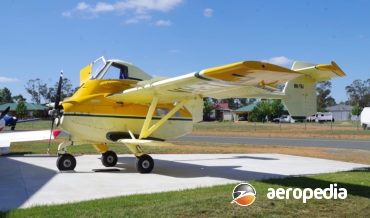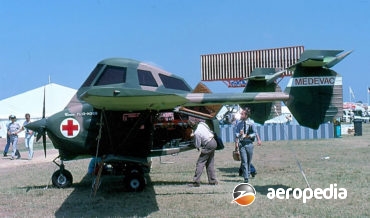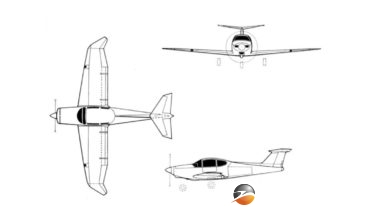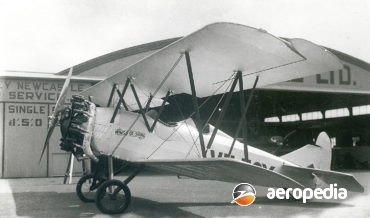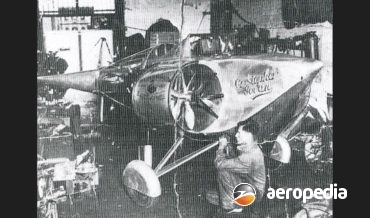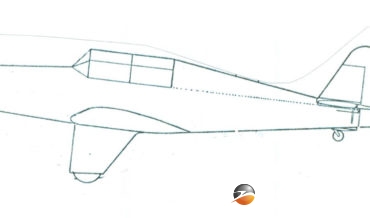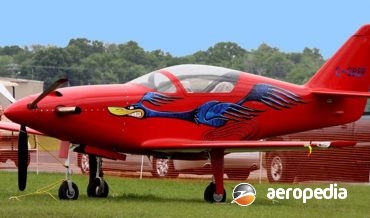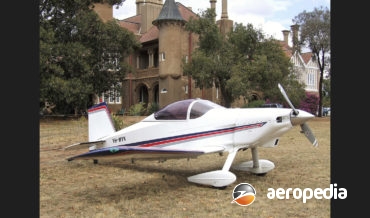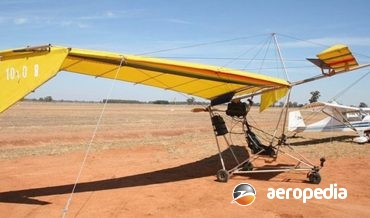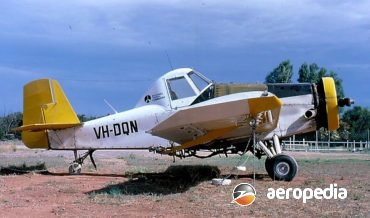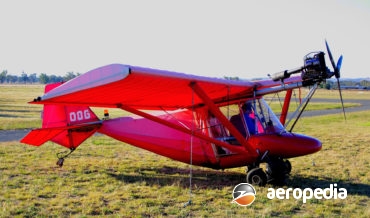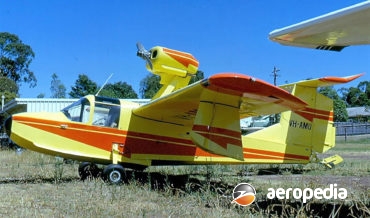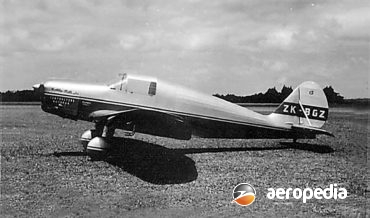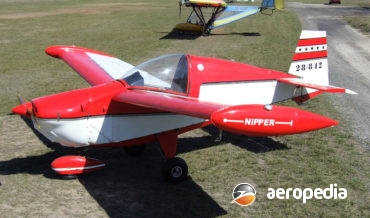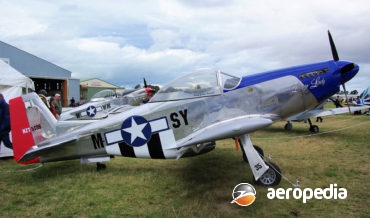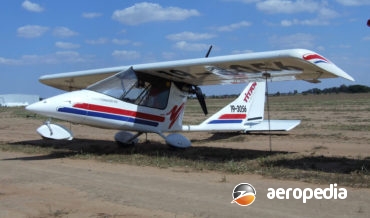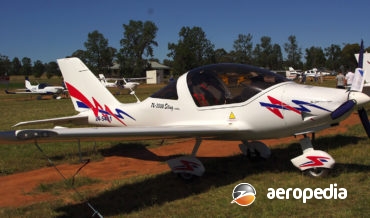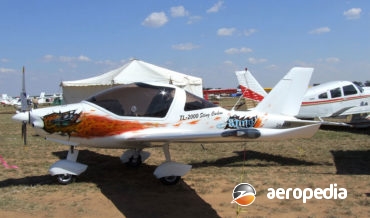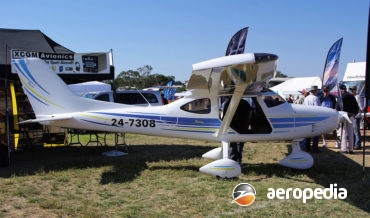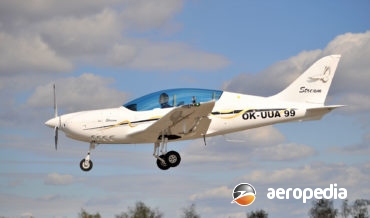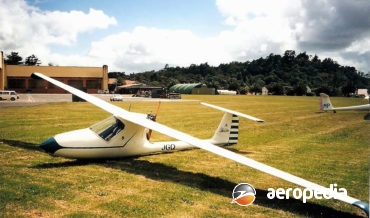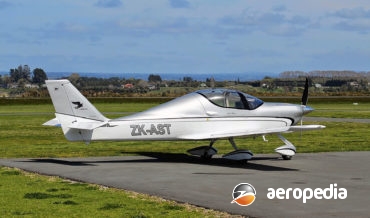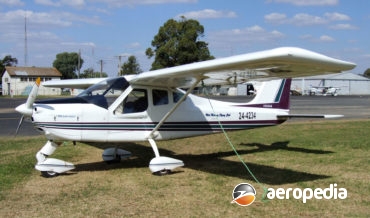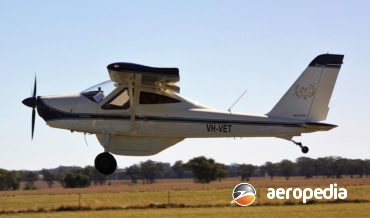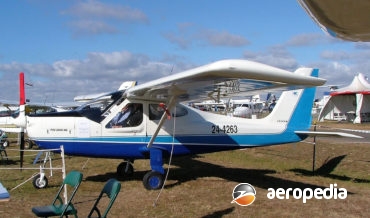David C. Eyre
In the late 1950s Transfield Construction Pty Ltd was founded by two Italian immigrants to contract to do transmission line work in Australia. A subsidiary, Transavia Corp, was formed in 1964 to build aircraft.
David C. Eyre
- May 8, 2019
To meet customer requirement, Transavia continued with further development of the basic Airtruk, and this led to the Model T-320 Airtruk fitted with the Rolls Royce/Continental Tiara 6-320-2B engine producing 239-kw (320-hp).
David C. Eyre
- May 8, 2019
The PL-13 was one of the many designs by the profilic designer, Luigi Pellarini and was a four-seat monoplane.
David C. Eyre
- May 8, 2019
To meet customer requirement, Transavia continued with further development of the basic Airtruk, and this led to the Model T-320 Airtruk fitted with the Rolls Royce/Continental Tiara 6-320-2B engine producing 239-kw (320-hp).
David C. Eyre
- May 8, 2019
For some years after World War II the Transland Aircraft Company of Torrance, California, a division of Hi Shear Rivet Tool Co, converted surplus World War II aircraft, particularly trainers, for the crop-dusting role.
David C. Eyre
- May 8, 2019
The Travel Air 2000 was a three-seat biplane built as a cross-country type of ‘outstanding quality’ of rugged construction with a lively performance, and as an efficient work aircraft.
David C. Eyre
- May 8, 2019
Following the success of the Curtiss OX-5 powered Model 2000, Travel Air moved on to the Model 3000, a three-seat open cockpit variant powered by a 112-kw (150-hp) Hispano-Suiza Model A engine or the high-compression Model E which produced 134 kw (180 hp).
David C. Eyre
- May 8, 2019
Designed by Richard Trickle and Vance Jaqua and first flown in 1991, the KIS is a two-seat all-composite amateur-built aircraft sold in kit form, the name KIS being an abbreviation of “keep it simple”.
David C. Eyre
- May 8, 2019
The TR-4 Cruiser is a development of the TR-1 and TR-2 Kis produced by Tri-R Technologies Inc of Oxnard California which is produced in kit form for the amateur constructor and may be fitted with a variety of engines.
David C. Eyre
- May 8, 2019
In 1933/34, following the announcement of the 1934 MacRobertson Air Race from England to Australia, there was great interest around the World and many persons and organisations set about entering suitable aircraft.
David C. Eyre
- May 8, 2019
In the early 1930s Messrs Leo Turl and Frank Gannon took over the Mascot hangar of General Aircraft Co. In November 1935 Mr J C Carpenter joined the company and Tugan Aircraft Ltd came into being.
David C. Eyre
- May 8, 2019
The development of the Hawk C3 was commissioned by Clifford Carpenter in February 1934, the aircraft being designed by James Connolly (Secretary of the Royal Aeronautical Society, Sydney Branch) who had previously designed two aircraft, known as the C1 and C2 but which were never built.
David C. Eyre
- May 8, 2019
In the 1990s Performance Aircraft designed the Legend as a high performance sport aircraft for amateur construction but the Company was later acquired by Legend Aircraft of Winnsboro of Lousiana.
David C. Eyre
- May 8, 2019
Designed by John Thorp in the USA, the T-18 has been one of the most popular home-built light aircraft for amateur construction, hundreds having been built around the world.
David C. Eyre
- May 8, 2019
The Thorp T-111 Sky Skooter was designed by John W Thorp as a development of his earlier design, the Little Dipper. The prototype was flown on 15 August 1946 powered by a 48-kw (65-hp) Lycoming engine and early production machines were produced by Thorp Engineering. Occasionally modifications were made to
David C. Eyre
- May 8, 2019
The Pegasus is a single engine high-wing monoplane with hybrid control, the wing having a swept back leading edge and a tapering chord. It has a canard wing and no tail.
David C. Eyre
- May 8, 2019
The prototype of the S2 series was flown for the first time in 1956. Designed by Leland Snow, who founded the Snow Aeronautical Company (later Corporation), the type has proved to be very successful in its role as an agricultural aircraft over the years.
David C. Eyre
- May 8, 2019
The Thruster Glasshouse was one of the many ultralight designs from Steven Cohen and was produced by Thruster Aircraft commencing in 1984.
David C. Eyre
- May 8, 2019
Thruster Aircraft, an Australian firm, built light aircraft at Kirrawee, NSW, for many years, later carrying on this work of construction and development of the series at Evans Head on the NSW north coast.
David C. Eyre
- May 8, 2019
The Teal amphibian was designed by David Thurston at Sandford in Maine, USA as a two-seat light amphibian for the sportsman pilot. It was fitted with a 112-kw (150-hp) Lycoming engine and a T-tail.
David C. Eyre
- May 8, 2019
Ernest Oscar Tips was the chief designer of Avions Fairey SA in Belgium in the 1930s, designing and building his first aircraft, the Tipsy S.1, a single-seat ultra light, in the company’s works at Gosselies, Belgium in 1935.
David C. Eyre
- May 8, 2019
The Nipper was designed by Mr E O Tips, who was managing director of Avions Fairey SA in Belgium. Previously Mr Tips had designed the Tipsy S, Tipsy B, the Belfair, Primer Trainer, and the Junior.
David C. Eyre
- May 8, 2019
The T-51 is manufactured in kit form by Titan Aircraft of Austinburg, Ohio, as a two-seat 70% scale replica of the North American P-51D Mustang and is aimed at the light sporting market. It can be fitted with a variety of engineers up to 112-kw (150-hp) but is usually fitted
David C. Eyre
- May 8, 2019
The Tornado is marketed in kit form by Titan Aircraft of Geneva, Oklahoma, in a variety of models. The Tornado I is fitted with a 37-kw (50-hp) Rotax 503 two-cylinder two-stroke engine and has a gross weight of 340 kg (750 lb).
David C. Eyre
- May 8, 2019
The TL Sting series of light aircraft is manufactured as a type certified ultralight aircraft in the Czech Republic and has been available in Australia in a number of models for some years.
David C. Eyre
- May 8, 2019
The TL-2000 Sting Carbon is one of a series of light aircraft produced by TL Ultralight Co in the Czech Republic, the company being established in 1990 in Hradec Kralove.
David C. Eyre
- May 8, 2019
The TL-300 Sirius is one of a number of light aircraft produced in the Czech Republic to LSA standards, first being completed in early 2009, having at that time completed flight testing and certification.
David C. Eyre
- May 8, 2019
The TL Ultralight Stream is one of a series of light sport aircraft produced in the Czech Republic by TL-Ultralight of Hradec Kralove and is a two seat in tandem light sport aircraft for private use.
David C. Eyre
- May 8, 2019
In the 1950s Reginald Todhunter became involved in sailplanes and started a business Glidair Sailplanes at Bankstown, NSW, where he repaired gliders.
David C. Eyre
- May 8, 2019
In 1967 brothers, Reginald and Ernest Todhunter, who at the time lived at Condell Park, a western Sydney suburb, commenced the design of a man-powered aircraft to enter the Worldwide competition announced by Henry Kremer, a British Industrialist, of a sum of $75,000 for the first group to build and
David C. Eyre
- May 8, 2019
The Cobra Arrow is an Australian designed and built light two-seat high-performance aircraft aimed at the sporting pilot, designed by Thomas Wickers, being supplied by the manufacturers, known initially as Tomair but later as Cobra Aviation, in kit form to the amateur constructor.
David C. Eyre
- May 8, 2019
The Explorer has been produced by Tomair for the Australasian market and the aircraft is basically a high-wing variant of the Cobra.
David C. Eyre
- May 8, 2019
The Viper SD-4 is a two-seat light sporting low-wing monoplane with a fixed tricycle undercarriage designed and produced in Slovakia. Design work commenced in 2004, the prototype flying for the first time on 1 November 2006 and it entered production in 2008.
David C. Eyre
- May 8, 2019
Costruzioni Aeronautiche Tecnam of Capua in Italy has for some years developed and produced a range of light aircraft for the sports pilot and a new aircraft was announced in 2013 known as the Astore (Goshawk), the prototype of which flew for the first time at Naples in June 2013,
David C. Eyre
- May 8, 2019
One of the new breed of light aircraft which can be registered under AUF or RAA regulations, or placed on the general aviation civil register, the P-92 Echo series is marketed by Costruzioni Aeronautiche Tecnam in Naples, Italy, the prototype P-92 Echo making its first flight on 14 March 1993.
David C. Eyre
- May 8, 2019
The P-92 TailDragger was introduced to the Tecnam range in 2012 to celebrate the 20th anniversary of the P-92 series of light aircraft, with some 2,500 examples of the series having been delivered by the end of 2012, the type operating in many countries around the World.
David C. Eyre
- May 8, 2019
The construction of the prototype of the P-96 Golf series commenced in July 1996, the first flight being made in March 1997.
David C. Eyre
- May 8, 2019
The RG series of aircraft produced by Tecnam was developed to meet the needs of a number of customers for variants with retractable undercarriages and two basic models have been produced, the high-wing P2000 RG and the P2002 JR-Retractable/CSU with a low wing.
David C. Eyre
- May 8, 2019
The Tecnam 2002 series was introduced to the Company’s line in 2004, being described as designed and built in the 21st Century, this is the standard all GA trainers should attain.
David C. Eyre
- May 8, 2019
The Bravo was a development by the Italian manufacturer of the popular series of light aircraft to meet the United States Light Sport Aircraft (LSA) class of flying machine as defined by the Federal Aviation Administration.
David C. Eyre
- May 8, 2019
Recent Comments
Archives
Categories
- No categories
Categories
- No categories
Latest Posts
Newsletter

